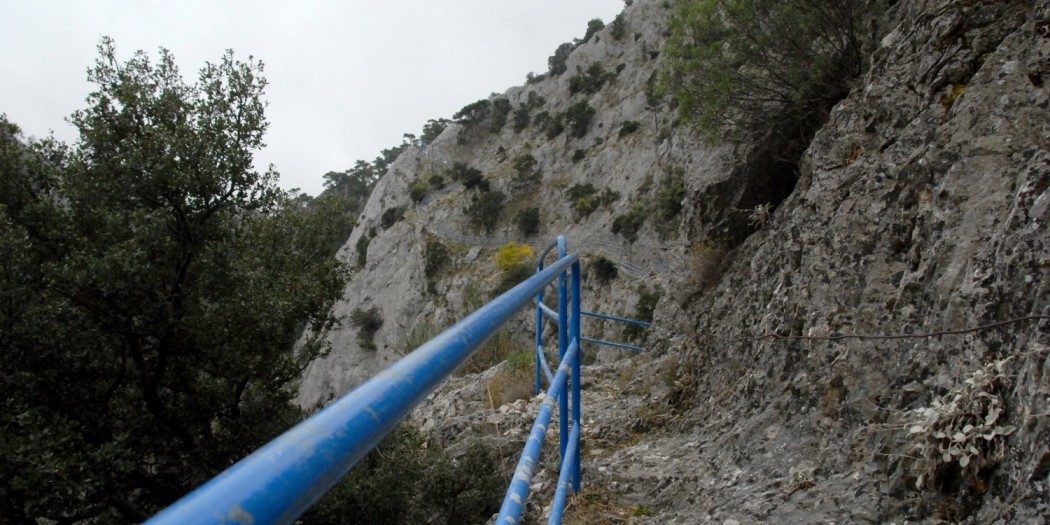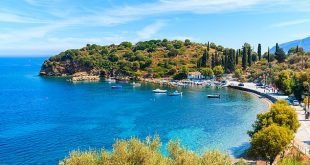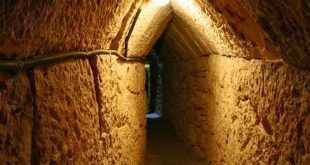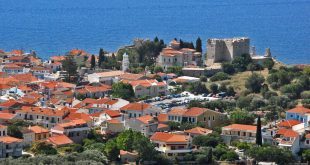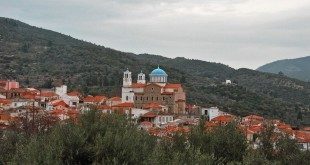Kakoperato gorge is an area of Mount Kerkis, rather unknown to most of the people, but with an incredible sense of, and perfect contact with nature.
We took our cameras and camcorders, packed supplies and a hazy autumn morning we arrived at Kosmadei village, heading towards Kakoperato. Fog, humidity, and the weather (at the end of the day it didn’t rain at all) made the route more mystical and suitable for walking.
From Kosmadei village a dirt road leads to the Monastery of Zoodochos Pigi (some 3 km long distance), which appears out of nowhere, hidden within dense vegetation. Austere, calm, and distant, inspires you to communicate with the “divine”.
The photographs are from the Monastery of Zoodochos Pigi in Kakoperato.
Equally impressive is the next walk we had (some 1.000 meters long) on a dirt road with nature … trying its best to hide the sky above “mobilizing” its huge and ancient trees…
A sign separates the entrance of the gorge from the road that leads to Marathokampos (in southern Samos).
Note that the route we took in Kakoperato does not lead into the gorge, but on the left side of the mountain and only for a short distance.
The gorge-which resembles that of Vikos in Epirus, but is less deep-continues for much longer distance and ends up in Seitania, in the north side of the island.
Up to nowadays the gorge is not accessible to visitors, but as some people from Kosmadei village told us, efforts are made in order to make the entire gorge suitable for walkers and not just for expert environmentalists and other scientist, as it is today. We hope that one day the effort will bear fruits, because the gorge is very impressive both in terms of size and morphology for a small island like Samos.
The walk on the slope is 500 meters long and is relatively easy due to the installment of a blue railing throughout the distance. However, the time needed to walk the 500 meters is rather long, because the pace cannot be classified as a walk but rather as climbing. Moreover brief stops are necessary in order to admire the landscape and to take photographs.
The walk in Kakoperato leads to the “Panaretos Hole” cave.
Photographs from our walk in Kakoperato gorge.
[masterslider alias=”ms-72-1″]
Photographs of plants and vegetation in Kakoperato gorge.
[masterslider alias=”ms-73-1″]
Please read the following comments made by the Greek Mountaineering-Hiking Association of Samos.
The approach to the gorge is very easy and the road leads right in its entrance. From Karlovassi, drive some 12 km to Kosmadei village and then, following a 4 km long, but well paved, dirt road, park your car near the Monastery.
The gorge withholds enough water, but only during the winter months, while during the rest of the year, water is present only in the cavities, which have been formed by cataracts. For climbing, excluding the high summer months, during the rest of the year you need appropriate clothing and equipment in order to cross the gorge since the average rappelling takes some 45 minutes (average height is ranging from 3 to 40 meters). The gorge has been secured with the installment of stainless steel plates.
A safe passage is located at a point some 2-3 hours away from the start and is an opening on its right-hand side. From there you can follow a path that goes over a creek that flows through the gorge. In 20-minutes you’ll find the main road that leads to the Monastery. This safe passage has been recently discovered by our team and change things. It means that we can “divide” Kakoperato gorge in two parts: Part 1 starts from the Monastery, all the way to the safe passage, and Part 2 starts from the safe passage, all the way to Megalo Seitani beach.
As mentioned above, the gorge ends at Megalo Seitani beach. It takes some 90 minutes’ walk to reach the road and Potami beach.
The time we spend to cross (twice) the gorge (a group of 6 people) was some 14 hours (including the time we spend in the process of securing the gorge). However, we estimate that an experienced team will need some 7 hours to descent the gorge. As said before, the gorge is secured due to the installment of stainless steel plates.
Its size is impressive bearing in mind that it located in a relatively small island, while it is really worth the effort for those looking for a weekend full of adventure.
 iSamos.gr Η ενημερωτική σελίδα της Σάμου! Εξερευνήστε τη Σάμο, τις παραλίες της, τη φύση της, τις ομορφιές της. Διαβάστε την ιστορία της Σάμου
iSamos.gr Η ενημερωτική σελίδα της Σάμου! Εξερευνήστε τη Σάμο, τις παραλίες της, τη φύση της, τις ομορφιές της. Διαβάστε την ιστορία της Σάμου

